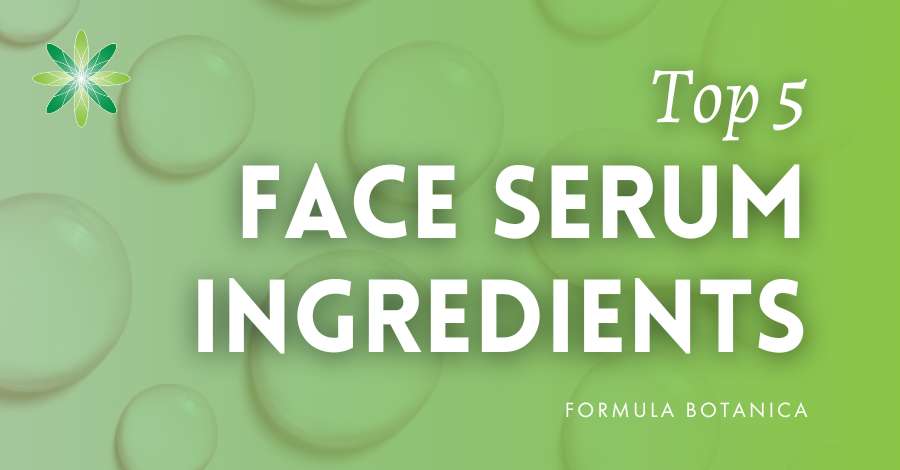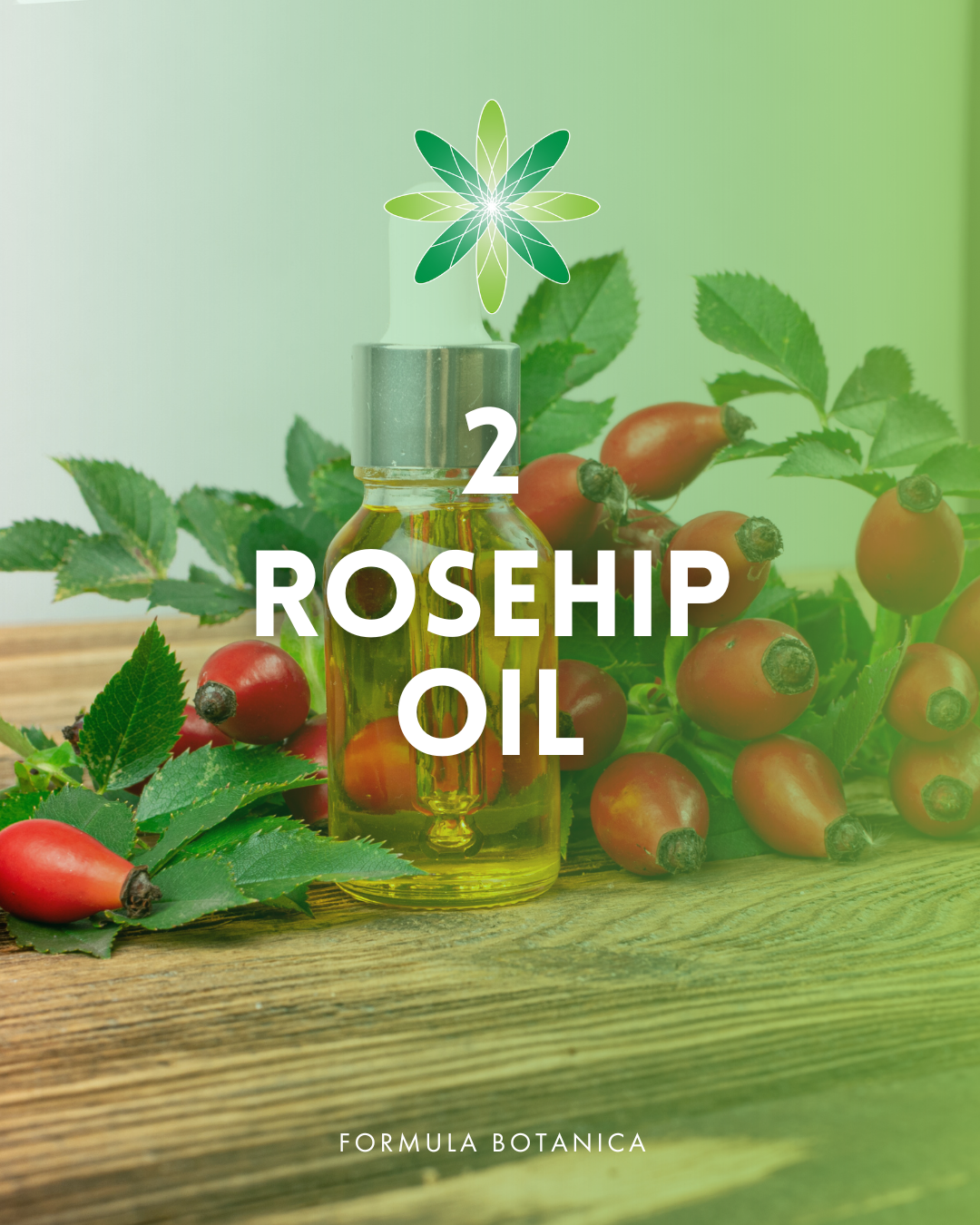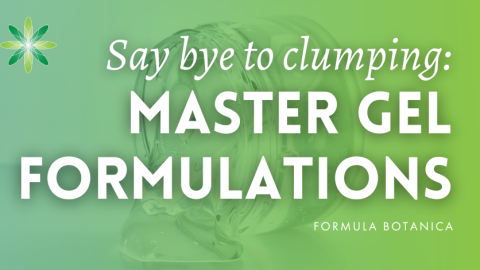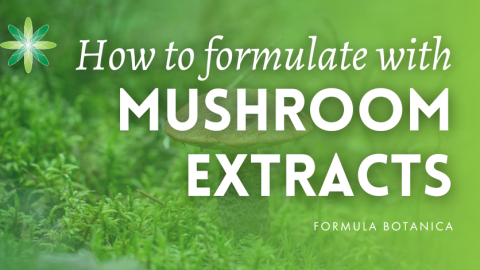Would you believe that face serums are some of the easiest skincare products you could formulate? It’s true. Not only are serums incredibly beneficial for the skin and one of the trendiest products in beauty, but they’re also surprisingly easy and fun to make. Plus, they’re great gifts for family and friends. But where do you start?
When making a serum, you can choose from a variety of bases- whether it’s an emulsion, a gel, or an oil blend. Your choice will depend on the texture, feel, and specific skincare goals you want to achieve, as well as your level of experience. But the real magic happens when you add active ingredients.
If you’re new to formulating, you’re in the right place. This blog post will guide you through the top 5 face serum ingredients every new formulator needs. These ingredients are not only widely accessible, but they’re also incredibly easy to formulate with. Ready to make your first serum? Let’s dive right in!
What are face serums?
Face serums are concentrated skincare products designed to deliver potent active ingredients directly to the skin, targeting specific concerns such as hydration, ageing signs, or hyperpigmentation. They can take various forms, including light emulsions, gels, water-based solutions, oils, or even pressed balms. Find out more about the types of face serums below:
The versatility of serums makes them a staple in any skincare routine, offering a range of textures and formulations to suit different skin types and needs. We teach you how to formulate serums in our Diploma in Organic Skincare Formulation.
Top 5 face serum ingredients for beginners
Whether you’re just embarking on your formulation journey or are already an experienced formulator, creating your own face serums is not only easy but incredibly fun. With the five essential ingredients listed below, you’ll be able to formulate serums that deliver visible, impressive results.
I recommend starting with oil-based serums— such as face serums, lip serums, and pressed balms—as they are easier to formulate. Once you feel more confident, you can progress to water-based serums, like emulsions and gels, which involve more advanced techniques like emulsification and preservation, which we also teach in our Diploma in Organic Skincare Formulation.
Find out more about preservation and emulsification here:
5 reasons why your natural formulations need preserving
Jojoba oil
INCI: Simmondsia Chinensis (Jojoba) Seed Oil
Native to the Sonora desert in Arizona, northern Mexico, and California, jojoba has been used in traditional remedies for centuries and is a highly valued ingredient in skincare formulation. Though often called an oil, jojoba is actually a liquid wax, often dubbed “liquid gold” for its rich colour and remarkable properties.
Renowned for its exceptional stability and ability to mimic human sebum, jojoba is an outstanding emollient that balances skin moisture without leaving a greasy feel. Its regenerative qualities and long shelf life make it ideal for all skin types, including dry, sensitive, and acne-prone skin. Studies also suggest that jojoba oil has anti-inflammatory, antimicrobial and antifungal activities (i). Find out more about jojoba below:
Jojoba oil adds a lightweight, hydrating texture to your face, lips, and pressed balm serums. As you progress in your formulation skills, you can also incorporate jojoba oil into your emulsion-based serums.
Rosehip oil
INCI: Rosa Canina Fruit Oil or Rosa Moschata Seed Oil or Rosa Rubiginosa Seed Oil or Rosa Eglanteria Seed Oil
Rosehip oil is a skincare gem prized for its ability to rejuvenate mature, acne-prone, and scarred skin. This vibrant reddish-orange oil is extracted from the seeds of rosehips and has been cherished for centuries for its powerful regenerative properties. Packed with essential fatty acids like alpha-linolenic acid, rosehip oil is a standout ingredient in serums and moisturisers, helping to smooth fine lines, even out skin tone, and reduce hyperpigmentation—all while leaving your skin feeling soft and non-greasy.
What sets rosehip oil apart is its incredible anti-inflammatory and antioxidant properties. It not only helps repair the skin barrier and alleviate dryness but also boosts collagen production, making it a go-to for reducing the appearance of scars and stretch marks (ii). Find out more about rosehip’s ability to reduce scars below:
Add rosehip oil to your face serums or during the cool-down phase of your emulsion-based serums. When selecting rosehip oil for your formulations, consider whether to use the refined or unrefined version.
Aloe vera
INCI: Aloe Barbadensis Leaf Juice
Aloe vera is a versatile and widely used skincare ingredient, known for its soothing, hydrating, and healing properties. And chances are that you’re already familiar with aloe.
Derived from the inner gel of the aloe plant, aloe vera has been a staple in traditional medicine for over 2,000 years. Rich in polysaccharides, aloe vera helps retain moisture and forms a protective barrier on the skin, making it ideal for treating burns, wounds, and irritation (iii). Find out more about aloe below:
In formulations, aloe vera is available as fresh gel, concentrated powder, or carrier oil. The powder, 200 times more concentrated than the gel, can be reconstituted for use in facial serums. Aloe vera is particularly effective in emulsion-based and gel-based serums, particularly eye gels, providing a cooling and hydrating effect, perfect for sensitive, dry, or sun-damaged skin.
Hyaluronic acid
INCI: Sodium Hyaluronate
Hyaluronic acid is one of the most popular ingredients in skincare. Renowned for its exceptional ability to hydrate and plump the skin, hyaluronic acid is naturally found in our skin, specifically the dermis, and plays a crucial role in maintaining skin hydration and elasticity. However, its levels decrease with age, leading to dryness and loss of firmness.
You can supply your skin with hyaluronic acid, a humectant which attracts and binds water, holding up to 1000 times its weight in water. Hyaluronic acid is an essential ingredient for restoring the skin’s hydration and reducing the appearance of fine lines. Find out more about hyaluronic acid below:
When formulating with hyaluronic acid, you can choose between low and high molecular weight hyaluronic acid (iv). Low molecular weight hyaluronic acid penetrates deeper into the skin, providing lasting hydration and reducing wrinkle depth, while high molecular weight forms a protective barrier on the surface, offering immediate plumping and hydration. For optimal results, use a combination of both in gel-based or emulsion-based serums, adding the powders in the cool-down phase.
Niacinamide
Niacinamide, also known as nicotinamide, is a powerhouse form of vitamin B3 that has taken the beauty world by storm—and for good reason. This multi-functional ingredient is a true all-rounder, offering a range of benefits that make it a must-have in any skincare routine.
Niacinamide’s standout features are its ability to strengthen the skin barrier, reduce water loss, and help the skin retain moisture. Its anti-inflammatory properties also make it particularly beneficial for acne-prone skin, where it can help regulate sebum production (v).
Additionally, niacinamide is known to boost collagen production, helping to improve the appearance of wrinkles and fine lines, as well as hyperpigmentation and age spots, making it a valuable ingredient against uneven skin tone.
Water-soluble and well-tolerated by all skin types, niacinamide can be incorporated into a variety of water-based serums, such as gels and emulsions.
Bonus: Exclusive free serum formulations
Now that you’re familiar with the top 5 must-have face serum ingredients for formulators, you’re probably eager to start creating your own serums. The good news? I’ve got you covered with a selection of free serum formulations that cater to all types of serums.
Whether you’re a beginner or looking to expand your skills, these formulas will guide you every step of the way. Just remember—start simple and build from there!
Face serum:
Eye serum:
Lip serum:
Body serum:
FAQ
- How do you use a face serum?
Serums are typically applied after cleansing and before moisturising, though some oil-based serums can replace a moisturiser due to their nourishing properties. Because they contain a higher concentration of active ingredients, only a few drops are needed for effectiveness. To use, apply one or two drops of our hydrating serum to your palm and massage it into cleansed skin, followed by your favourite moisturiser. You can also enhance your facial mask by adding a couple of drops to it before application.
- What’s the difference between face oils and face serums?
Face oils and face serums both nourish the skin but serve different purposes. Face oils are blends of carrier oils like almond or jojoba, mainly used for daily moisturising. In contrast, oil-based serums are more concentrated treatments packed with high-performance oils and active ingredients that target specific skin concerns like ageing or hyperpigmentation.
- What’s the difference between face creams and face serums?
Face serums are lightweight, concentrated treatments designed to deliver active ingredients deep into the skin, targeting specific concerns like wrinkles or dark spots. They can be gel, oil, or emulsion-based and are typically applied before moisturisers. Moisturisers are thicker creams that focus on locking in hydration and maintaining the skin’s moisture barrier, often used after serums for optimal results.
- Does a facial serum need a preservative?
Whether a facial serum needs a preservative depends on the formulation. Water-based serums do require a preservative to prevent microbial growth. However, oil-based serums don’t generally require a preservative because they contain no water and are less prone to contamination. However, they do require an antioxidant like vitamin E to prevent oxidation. We teach everything about natural preservation in our Diploma in Organic Skincare Formulation.
Learn how to formulate serums
Mastering the art of face serum formulation is both an exciting and rewarding journey. With the right face serum ingredients and a thoughtful approach, you can create serums that truly deliver results. Start with the basics, and as your confidence grows, gradually introduce more complex and high-performance ingredients into your creations.
References & further reading
(i) Pazyar et al, 2013. Jojoba in dermatology: a succinct review
(ii) Valerón-Almazán et al, 2015. Evolution of post-surgical scars treated with pure rosehip seed oil
(iii) Radha et al, 2015. Evaluation of biological properties and clinical effectiveness of aloe vera: A systematic review
(iv) Essendoubi et al, 2015. Human skin penetration of hyaluronic acid of different molecular weights as probed by Raman spectroscopy
(v) Boo YC, 2021. Mechanistic basis and clinical evidence for the applications of nicotinamide (niacinamide) to control skin aging and pigmentation
Leave us a comment

Ariane is Formula Botanica’s Content Creator and an active member of the student community. She has worked as a professional journalist, blogger, copywriter and editor before joining Formula Botanica full-time in 2024.


































